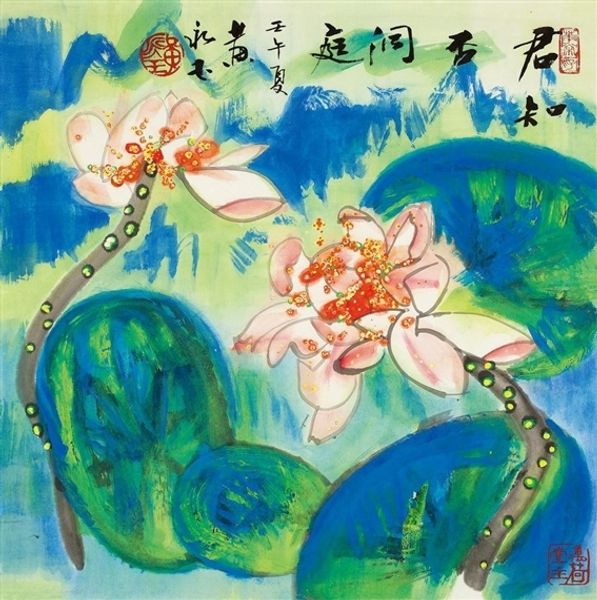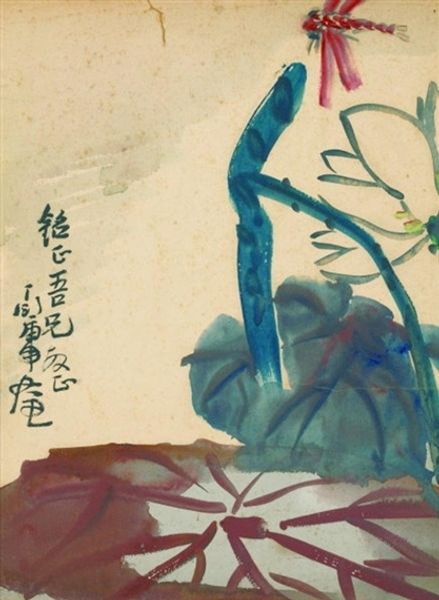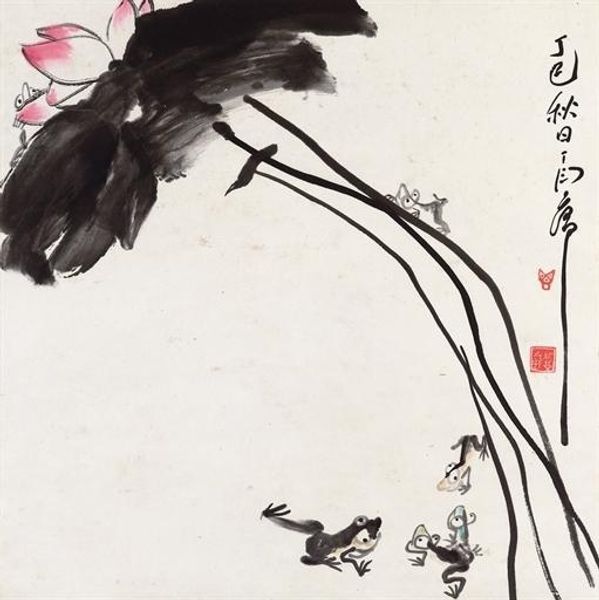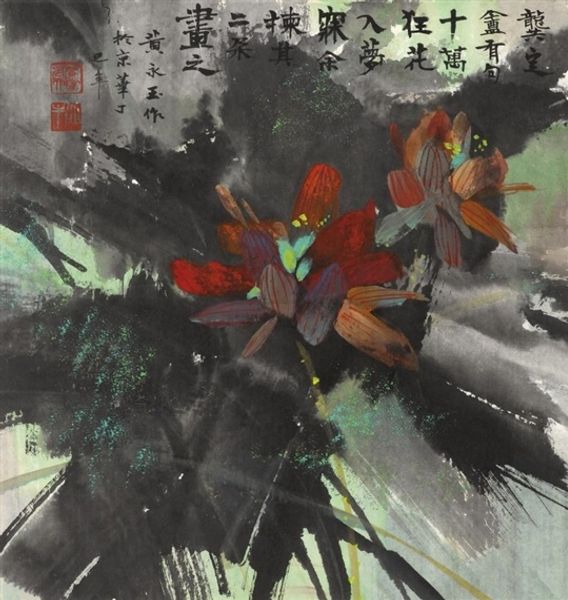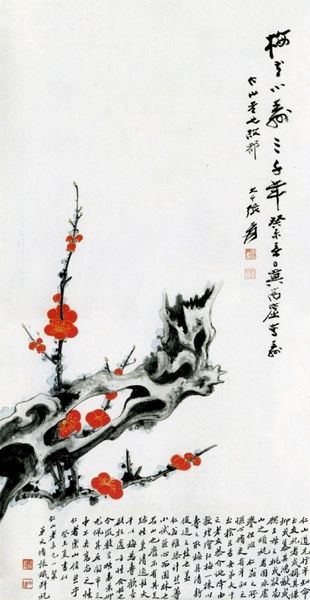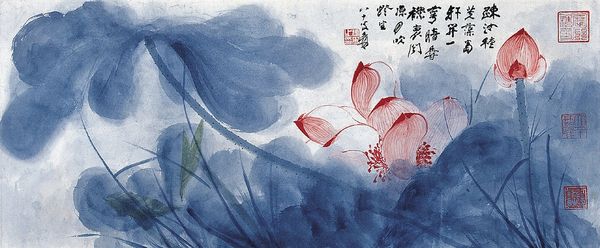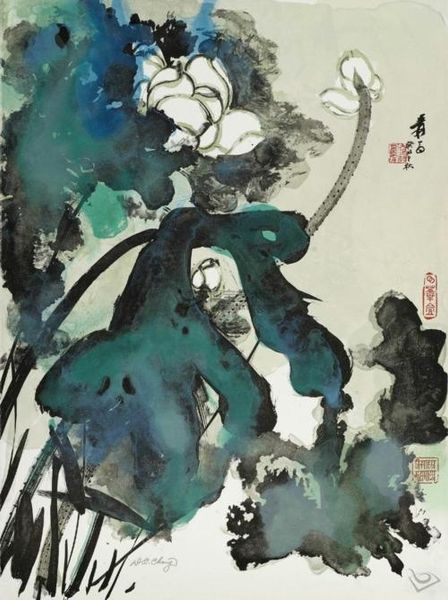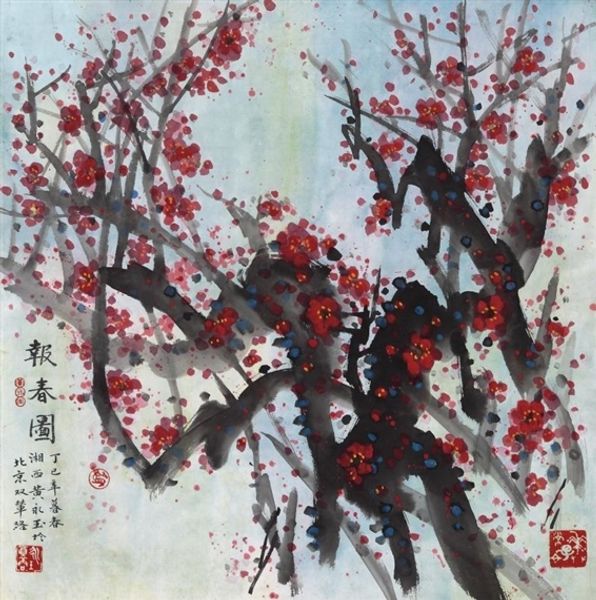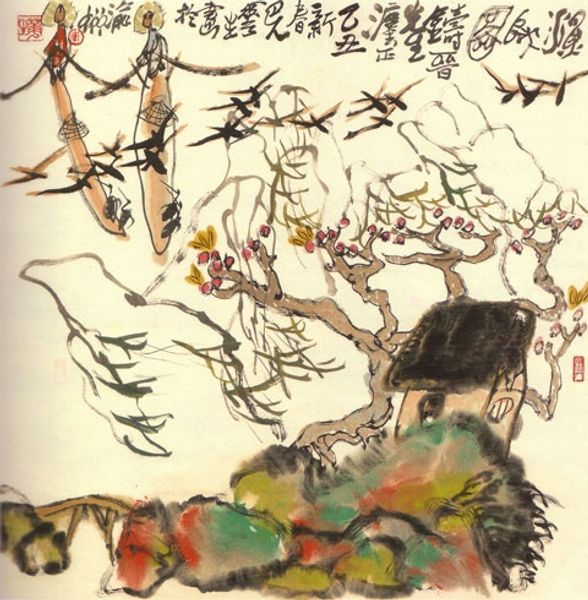
Copyright: Huang Yongyu,Fair Use
Huang Yongyu painted "Two Lotus" using traditional Chinese ink and color on paper. Yongyu, a member of the Tujia ethnic group, navigated a complex identity, particularly during periods of political upheaval in China. During the Cultural Revolution, artists were expected to conform to strict socialist ideals. "Two Lotus" diverges from propaganda art, instead Yongyu uses the lotus, a symbol deeply embedded in Chinese culture, to evoke purity, peace, and spiritual awakening, concepts that resonate with Buddhist and Taoist philosophies. The lotus' ability to rise from muddy waters to bloom cleanly has historically been interpreted as a metaphor for overcoming adversity and achieving enlightenment. Yongyu once said, "The lotus in my eyes is not just a flower; it embodies a spirit." The seemingly simple painting becomes a subtle act of cultural preservation and resistance. The lotus blossoms are intensely personal, reflecting Yongyu's emotions. In rendering these flowers, Huang Yongyu engages with themes of identity, resilience, and the enduring power of cultural symbols.
Comments
No comments
Be the first to comment and join the conversation on the ultimate creative platform.
